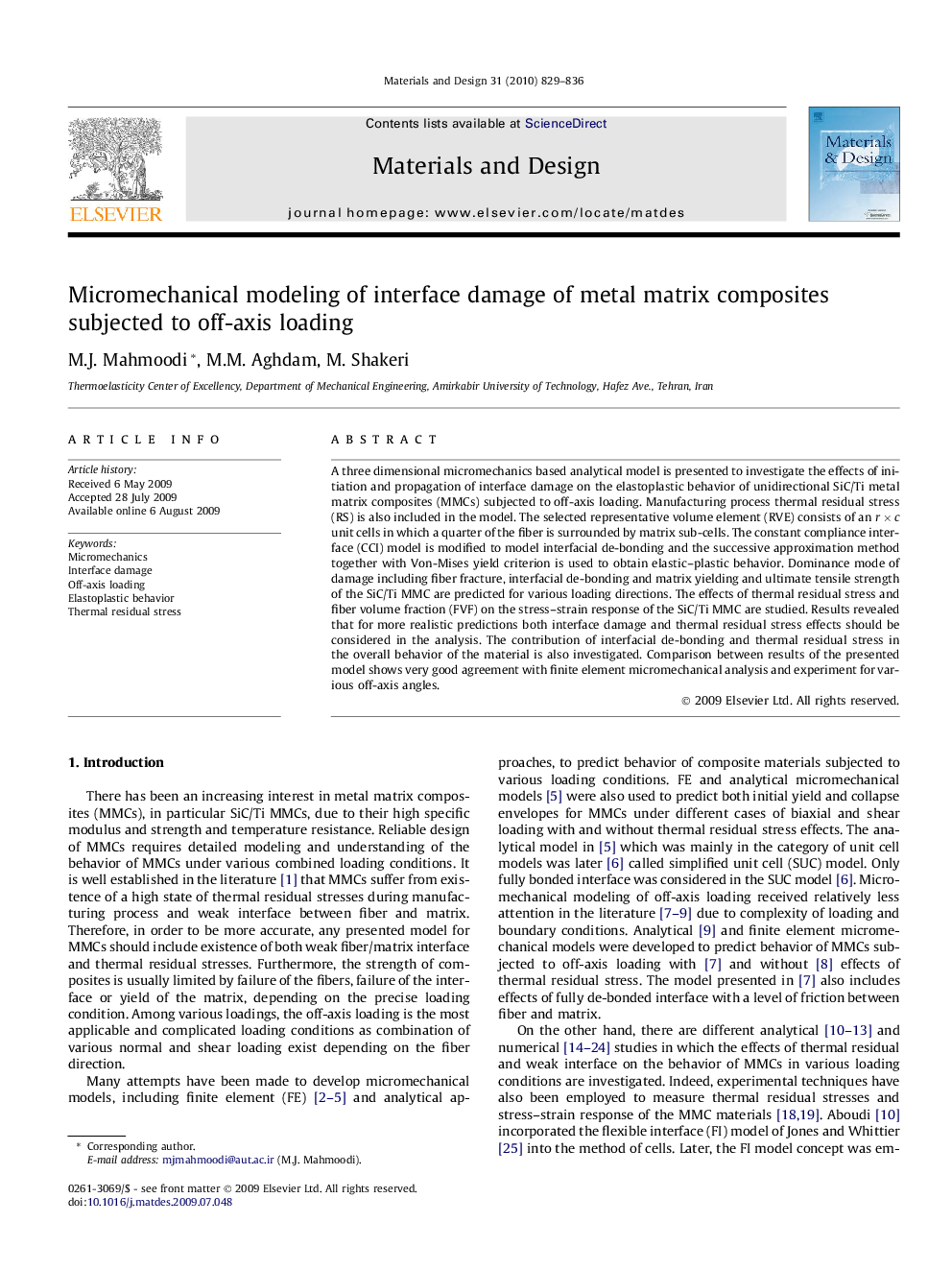| Article ID | Journal | Published Year | Pages | File Type |
|---|---|---|---|---|
| 832014 | Materials & Design (1980-2015) | 2010 | 8 Pages |
A three dimensional micromechanics based analytical model is presented to investigate the effects of initiation and propagation of interface damage on the elastoplastic behavior of unidirectional SiC/Ti metal matrix composites (MMCs) subjected to off-axis loading. Manufacturing process thermal residual stress (RS) is also included in the model. The selected representative volume element (RVE) consists of an r × c unit cells in which a quarter of the fiber is surrounded by matrix sub-cells. The constant compliance interface (CCI) model is modified to model interfacial de-bonding and the successive approximation method together with Von-Mises yield criterion is used to obtain elastic–plastic behavior. Dominance mode of damage including fiber fracture, interfacial de-bonding and matrix yielding and ultimate tensile strength of the SiC/Ti MMC are predicted for various loading directions. The effects of thermal residual stress and fiber volume fraction (FVF) on the stress–strain response of the SiC/Ti MMC are studied. Results revealed that for more realistic predictions both interface damage and thermal residual stress effects should be considered in the analysis. The contribution of interfacial de-bonding and thermal residual stress in the overall behavior of the material is also investigated. Comparison between results of the presented model shows very good agreement with finite element micromechanical analysis and experiment for various off-axis angles.
